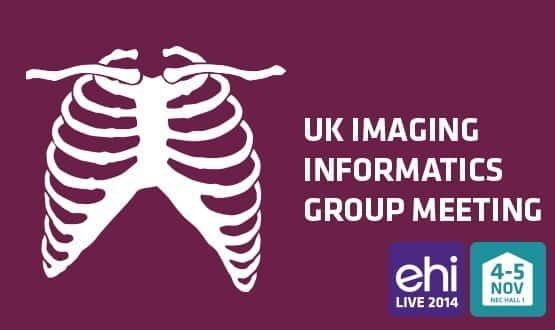Made to measure
- 10 September 2014

Hospitals should set radiation doses in CT scans to the lowest possible levels, because of the increased cancer risk to patients.
That was one of the key recommendations of a report issued in August by the government’s Committee on Medical Aspects of Radiation in the Environment.
The issue of radiation risk is not a new one, but it is the focus of increasing concern, as use of medical imaging grows. In 2012-13, NHS hospitals in England carried out 4.7m CT scans: an increase of 167% in ten years.
Working towards a working party
At the annual meeting of the Imaging Informatics Group at EHI Live 2013, the Department of Health announced that it was planning to set up a working party on radiation dose monitoring, with the longer-term aim of creating a national dose registry.
The announcement was in response to the new European directive on radiation monitoring, which requires member states to carry out national monitoring of patient radiation dose. Member states would have four years – until February 2018 – in which to implement the directive.
The working party is still not in place, but the aim is to have it ready by the autumn. Neither has membership been announced, though it will include representatives from radiology professional bodies.
Sue Edyvean, head of the medical dosimetry group at Public Health England, says that timescales for implementing a dose registry will be agreed once the working party meets.
Once the directive is passed into law, every trust will have to collect patient dose data and make it centrally available. In practice, this already happens in England, though it’s generally done by manually entering dosage into a database.
A dose registry will automate the process, so trusts will have to use modalities that can produce dose data in the format of a DICOM structured report, which will then be collected by the central database.
Some trusts, however, are already going one step further and purchasing automated dose monitoring software that collates dose data from scanning equipment and presents it visually, making it simple to see how much radiation dose patients are receiving.
A good thing but a hard sell
Dose monitoring software isn’t necessary to comply with the legislation; but it does offer benefits for individual trusts and may, if adopted widely, provide collective benefits for radiology.
The more trusts that implement dose monitoring, the more data is gathered; making it possible to carry out benchmarking and standardisation of radiation dosage.
Uptake of dose monitoring products has been slow, however. Ian Judd, product manager for Sectra’s DoseTrack, says: “It’s really slow-burning.
“Dose monitoring software doesn’t save you any money, and it doesn’t make you any money, so it’s probably hard to justify.”
Both Sectra and another major supplier, GE Healthcare, have found that most of the sales they have made so far in England have been made as part of picture archiving and communications system procurements.
This enables the purchase to be absorbed into the wider cost of the PACS, which trusts are having to buy or renew anyway, as the national contracts for digital imaging come to an end.
With the exception of a handful of established users, most of the trusts that have gone down this route are just starting, or at best just completing, their implementations.
HSS, which sells PACSHealth’s DoseMonitor product as an additional module to CRIS, its radiology information system, is about to carry out its first implementations, including one at North West London Hospitals NHS Trust.
Not so much to cut
Paradoxically, one problem for vendors is that NHS trusts already take dose monitoring seriously.
Healthcare providers in the US and in certain other countries can hope to reduce radiation dose to patients by about 20% by using dose monitoring software, says Judd. But in the UK, trusts can expect to see smaller reductions, of about 5%-10%.
Dose monitoring is not just about gaining a broad picture of radiation dose, though. One of the benefits offered by the software is its ability to identify outliers, such as a piece of equipment or an operator regularly delivering too high a dosage to patients.
Dawn Phillips, radiation dose modality leader at GE, says a typical problem highlighted by the software is that an operator has failed to optimise the patient’s position in a scanner: “The patient needs to be in the centre, and if the radiographer is not operating the best practice, that can increase dose significantly.”
Similarly, in interventional radiology, the dose monitoring software captures and displays where the dose is concentrated on a particular skin area. “This gives the interventional team the opportunity to change dose direction and then thereby avoid a dose hotspot and skin damage on that patient,” says Phillips.
Also, however good a hospital may believe its procedures to be, things can go wrong. Phillips cites an example of a hospital that, having implemented GE’s DoseWatch product, found that a particular CT scanner was delivering an adult dosage to child patients.
The scanner’s dose modulation feature had not been turned on, so it was delivering the same radiation dose to every patient.
The ability to integrate dose data with other applications can also lead to a better picture of departmental practice as a whole.
Marc Newman, clinical business manager at Wellbeing, which supplies the HSS product, says that the integration of dose monitoring software with the HSS RIS has increased the accuracy of information held in the RIS.
This makes it possible to identify areas where more training is needed, where equipment might need to be recalibrated, or where there are bottlenecks in workflow.
Time will show the real benefits
Some of the bigger benefits will only become apparent after hospitals have been using dose monitoring software for several months.
The more data a trust collects, the more it is able to work to bring the dose level down, and the easier it will be to identify anomalies and outliers, such as a new radiographer joining the trust and not setting the protocols correctly.
At the same time, as more trusts adopt dose monitoring software – and Judd is confident that, despite the slow start, all NHS trusts will adopt it in the next few years – it will be increasingly possible to benchmark performance against other trusts by sharing dose data.
This will enable all trusts to improve practice – and help England maintain its position as a world leader in keeping radiation dose low.
Dose monitoring will be one of the hot topics for discussion at the UK Imaging Informatics Group’s annual meeting, which will be held at EHI Live 2014 for the fourth time this year.
This year’s show takes place at the NEC in Birmingham from 4-5 November, and registration is open now. Visit the EHI Live 2014 website for details.





